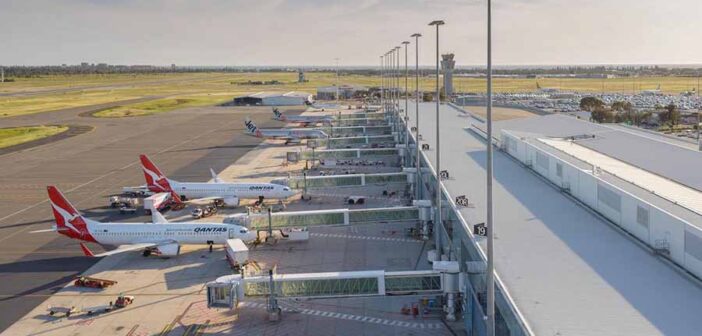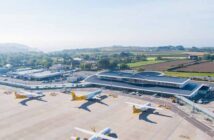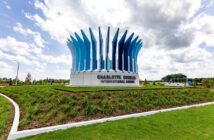Travelers arriving at Adelaide Airport enter a single terminal building that accommodates both domestic and international flights to over 50 destinations, with Qantas, Virgin Australia, and Jetstar as the primary operators across 27 gates divided into east and west wings.
The ground floor handles check-in counters and baggage drop, leading to security on the same level before ascending to the departures concourse where gates spread out in a linear fashion reachable in five to 10 minutes on foot via wide corridors equipped with moving walkways on longer segments.
Passengers find the flow logical with overhead signs in English and key languages like Mandarin, directing from the central atrium through passport control for outbound international legs to seating clusters, all within a structure that processed 8.7 million travelers in the 2025 financial year on two main runways that coordinate operations steadily.
The airport lies six kilometers west of Adelaide’s central business district along Sir Richard Williams Avenue off the West Terrace arterial road, a 15- to 20-minute drive through light suburban traffic on the A13. Adelaide Metro’s JetExpress J1 bus departs Grenfell Street every 15 minutes for six dollars linking directly to the terminal forecourt in 25 minutes, with the J2 from the Adelaide Railway Station reaching in 30 minutes for the same fare and tying into regional trains.
Ridesharess including Uber and Ola arrive at departures curbs for 20 to 25 dollars taking 15 minutes to the city, taxis stand by outside arrivals for a metered 30-dollar ride, and hotel shuttles depart from bays near the entrance around the clock. Rental cars from Budget and Thrifty operate in a nearby consolidated lot shuttled by free buses every 10 minutes, and parking garages connected by covered walkways charge 25 dollars daily with 1,500 spots, long-term areas a short drive away at 15 dollars that fill in peaks but accept app reservations.
Security moves along at three checkpoints open from 4 a.m. to last departure, where SmartGate e-passport lanes keep waits under 10 minutes for eligible users, though manual queues in mornings can add 15 minutes for bag inspections. Connections operate with 45-minute minimums for domestic transfers within the terminal, allowing a stroll to the next gate or lounge access, while international arrivals clear biosecurity and customs in 30 to 45 minutes before baggage claim or onward buses.
On-time departures average 82 percent from carrier records, supported by 500 daily movements across the runways, but southerly winds in afternoons or occasional equipment checks often prompt 20-minute holds, and the airport app alerts for staffing changes or air traffic adjustments.
Dining includes over 30 outlets in the expanded precinct, from early Starbucks at 4 a.m. in the atrium to sit-down spots like James Squire Bar for local brews or Haigh’s Chocolates cafe for treats running 5 a.m. to 10 p.m. with South Australian wines and pies. Retail threads the concourses with Relay for snacks and papers from dawn, duty-free shops stocked with Penfolds vintages and skincare for international routes, and stores like R.M. Williams for boots or tech outlets near the central hub.
Facilities cover free Wi-Fi renewable every two hours across the terminal, charging stations at gate benches, pet relief areas airside with turf in both wings, and nursing rooms post-security with locks. Lounges such as Qantas Club in the east wing and Virgin Australia in the west provide showers and workspaces for members with the Qantas Business Lounge opening mid-2025, quiet zones near gates offer low noise, and accessible lifts with priority paths span the building. The terminal runs with info desks staffed from first flight, supplying clear routes for the journey ahead.




